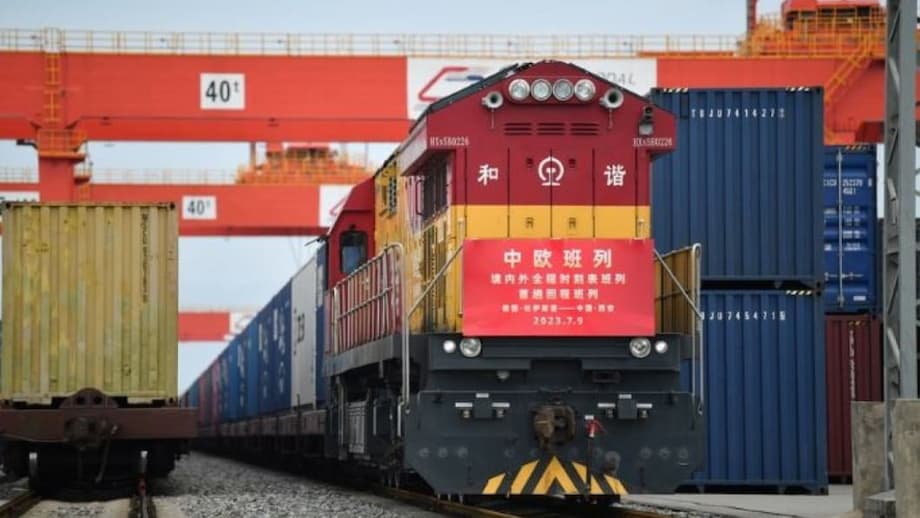The Dawn of a New Trade Route: China and Iran’s Rail Revolution
In May 2025, a freight train from Xi’an, China, arrived at Iran’s Aprin dry port near Tehran, marking the official launch of the China-Iran rail corridor. This event, while quiet in its immediate spectacle, signals a seismic shift in global trade and geopolitics. The new overland route slashes transit times between China and Iran from 30-40 days by sea to just 15 days by rail, bypassing vulnerable maritime chokepoints and Western-controlled sea lanes. For many observers, this is not just a logistical achievement but the realization of British geostrategist Halford Mackinder’s century-old prophecy: that the “Heartland” of Eurasia would one day wield decisive global power.
- The Dawn of a New Trade Route: China and Iran’s Rail Revolution
- Why the China-Iran Rail Corridor Matters
- Geopolitical Earthquakes: Shifting Alliances and Rising Tensions
- Iran’s Strategic Gamble: Hub or Bypass?
- The Multipolar Chessboard: China, Iran, Russia, and Beyond
- Sanctions, Sovereignty, and the Limits of Alliance
- Competing Corridors: IMEC, CPEC, and the Struggle for Influence
- Broader Implications: The End of Sea Dominance?
- In Summary
This corridor is more than a steel track across deserts and mountains. It is a symbol of shifting alliances, the rise of multipolarity, and the contest for influence across Eurasia. As the whistle of the first train echoed across Iran’s landscape, it heralded a new era in which trade, energy, and sovereignty are being redefined.
Why the China-Iran Rail Corridor Matters
The China-Iran rail corridor is a cornerstone of China’s Belt and Road Initiative (BRI), a vast infrastructure and investment program aiming to connect Asia, Africa, and Europe through a network of land and sea routes. For Iran, the corridor is a lifeline, enabling it to export oil and goods to China and beyond, circumventing U.S. sanctions and maritime blockades that have long constrained its economy. For China, it secures a reliable energy supply and a direct overland link to the Middle East, reducing dependence on maritime routes like the Strait of Malacca, which are susceptible to disruption by Western navies.
Iran now transports up to 90 percent of its oil exports to China via this corridor, supplying about 16 percent of Beijing’s crude needs. The economic stakes are enormous: the corridor is part of a $400 billion economic agreement between the two countries, with China investing heavily in Iranian infrastructure. The Aprin dry port, where the first train arrived, is central to Iran’s export strategy, serving as a hub for goods destined for Europe and other markets.
But the corridor’s significance goes far beyond commerce. It is a geopolitical tool, allowing both countries to bypass Western sanctions and project influence across Eurasia. As one analyst put it,
“The new China-Iran overland corridor helps mitigate the risks of naval interdiction by Western forces that hamper Iranian trade.”
The route also connects with Russia’s International North-South Transport Corridor (INSTC), creating a sanctions-resistant network that links China, Iran, Russia, Turkey, and potentially Europe.
Geopolitical Earthquakes: Shifting Alliances and Rising Tensions
The launch of the China-Iran rail corridor comes at a time of heightened geopolitical tension. The United States has reactivated its “maximum pressure” campaign against Iran, seeking to isolate Tehran economically and cut off its energy exports. Israel, viewing Iran’s nuclear ambitions as an existential threat, has conducted air strikes on Iranian infrastructure, including the Natanz nuclear facility. These actions reflect deep anxiety among Western powers as new alliances take shape.
For the West, the corridor signals the decline of centuries-old sea dominance and the weakening of the petrodollar system, as China increasingly pays Iran in yuan. For the non-Western world, it offers hope for energy security, economic development free from the constraints of Western financial institutions, and resistance to sanctions. The train through Iran is seen as a symbol of “multipolar sovereignty,” where trade and power move along new overland routes, challenging the old order.
The corridor’s emergence is also a response to recent disruptions in global shipping. Attacks by Houthi rebels in the Red Sea, instability in the Suez Canal, and rising shipping costs have made overland routes more attractive. As maritime risks grow, the reliability and security of rail corridors become increasingly valuable.
Iran’s Strategic Gamble: Hub or Bypass?
Iran’s geographical position has always made it a bridge between East and West. The new rail corridor cements its role as a pivotal hub in Eurasian connectivity. By integrating into the Belt and Road Initiative and the INSTC, Iran is betting on its ability to attract investment, boost trade, and resist isolation.
However, this strategy is not without risks. The explosion at Shahid Rajaee Port in April 2025, a key hub in the North-South Corridor, highlighted the vulnerability of Iran’s infrastructure to sabotage and regional competition. The incident disrupted cargo flows and raised doubts among foreign investors, potentially strengthening rival corridors in Iraq, the UAE, and Pakistan. As one report noted,
“The explosion at Shahid Rajaee, at a critical moment when Iran was attempting to solidify its role in large regional transit projects, has dealt a heavy blow to Iran’s geoeconomic prospects.”
If Iran cannot quickly recover, competitors like Turkey and Israel could push it out of regional transit equations.
Moreover, the corridor faces significant operational challenges. The rail line traverses countries with different track gauges, signaling systems, and legal frameworks, requiring costly transshipment and complex coordination. Customs procedures, tariffs, and infrastructure quality vary widely, creating bottlenecks and administrative burdens. Security risks, from regional instability to sabotage, add further complications. Sustained investment and diplomatic coordination are essential to overcome these hurdles.
The Multipolar Chessboard: China, Iran, Russia, and Beyond
The China-Iran rail corridor is not an isolated project. It is part of a broader contest for influence across Eurasia, involving multiple corridors and competing alliances. The informal coalition of China, Iran, and Russia (sometimes called CIRN) is building alternative trade and investment platforms to counter Western dominance. Russia’s war in Ukraine and the resulting sanctions have accelerated the search for new routes, with the Southern Corridor (China through Central Asia, Iran, and Turkey to Europe) and the Middle Corridor (China through Kazakhstan, the Caspian Sea, Azerbaijan, Georgia, Turkey, and the Black Sea) emerging as critical arteries.
Turkey, straddling Europe and Asia, is a key player in both the Middle and Southern Corridors. Its growing ties with China and interest in joining BRICS reflect a strategic balancing act between East and West. The Middle Corridor, supported by the EU and Japan, offers an alternative to routes dominated by Russia and Iran, but its capacity and infrastructure lag behind. The West, recognizing the strategic importance of these corridors, is urged to invest more actively to maintain influence over global trade routes.
Meanwhile, China is expanding its rail ambitions beyond Iran. Projects like the Trans-Afghan Railway and the China-Pakistan Economic Corridor (CPEC) aim to connect Central and South Asia, providing landlocked states with access to the Arabian Sea and bypassing both Iran and Russia. These initiatives, if realized, could fundamentally alter trade, energy security, and diplomatic relations across Eurasia.
Sanctions, Sovereignty, and the Limits of Alliance
The China-Iran corridor is a direct challenge to the effectiveness of Western sanctions. By providing alternative routes for trade and energy exports, it undermines efforts to isolate Iran and restrict its economic options. China, as Iran’s largest crude importer, benefits from discounted oil and greater energy security. For Iran, the corridor is a shield against economic pressure and a platform for asserting sovereignty.
Yet the alliance between China, Iran, and Russia is pragmatic rather than ideological. Each country pursues its own interests, and the partnership is marked by latent rivalry and caution. China balances its support for Iran with its ties to Gulf energy suppliers and avoids direct confrontation with the U.S. Russia, while collaborating with Iran on trade corridors, is wary of China’s growing economic influence and sees Iran as a competitor in Asian energy markets. The relationship is a tactical coalition, driven by converging interests but limited in scope.
As one expert explained,
“The alliance among Iran, Russia, and China is useful as a pressure point against U.S. dominance and as a shield for economic survival under sanctions, but it remains limited in scope.”
The ongoing Iran-Israel conflict exposes the fragility of this alignment, as both Moscow and Beijing are cautious not to risk their broader regional interests.
Competing Corridors: IMEC, CPEC, and the Struggle for Influence
The China-Iran rail corridor is part of a larger competition among regional and global powers to shape the future of Eurasian connectivity. The India-Middle East-Europe Economic Corridor (IMEC), launched at the G20 Summit in 2023 with U.S. backing, aims to link India to Europe via the UAE, Saudi Arabia, Jordan, and Israel. IMEC is seen as a counterweight to China’s Belt and Road Initiative, but the ongoing Israel-Iran conflict has introduced significant geopolitical risk, threatening the corridor’s viability and forcing participants to consider alternative routes.
Similarly, the China-Pakistan Economic Corridor (CPEC) and the planned Trans-Afghan Railway offer alternative pathways for trade and influence. The explosion at Shahid Rajaee Port and other incidents of sabotage highlight the vulnerability of Iran’s position and the constant jockeying among regional rivals. Ports in Iraq, the UAE, and Pakistan stand to benefit if Iran’s transit role is weakened.
For Central Asian countries, the proliferation of corridors offers opportunities for economic development and greater independence from traditional powers. The World Bank projects that by 2030, the Middle Corridor could triple freight volumes and increase China-EU trade by 30 percent, though operational challenges remain.
Broader Implications: The End of Sea Dominance?
The rise of overland corridors like the China-Iran rail line signals a potential shift in the balance of global trade. For centuries, control of the seas has been the foundation of Western power. The new rail routes, by bypassing maritime chokepoints and sanctions, challenge this dominance and offer alternative visions of connectivity and sovereignty.
For China, the corridors are a means to secure energy supplies, diversify trade routes, and expand its influence across Eurasia. For Iran, they are a path to economic resilience and regional relevance. For the West, they are both a challenge and an opportunity: a challenge to established systems of control, but also an opportunity to invest in new partnerships and infrastructure to maintain a role in the evolving landscape.
Yet the transition is far from smooth. Operational, regulatory, and security challenges abound. The alliances underpinning the corridors are fragile, shaped more by pragmatism than solidarity. The future of Eurasian connectivity will depend on the ability of all players to navigate these complexities and adapt to a rapidly changing world.
In Summary
- The China-Iran rail corridor dramatically reduces transit times and bypasses Western-controlled maritime routes, reshaping global trade patterns.
- It is a key component of China’s Belt and Road Initiative and a lifeline for Iran’s sanctioned economy, deepening ties between the two countries.
- The corridor connects with Russia’s North-South Transport Corridor, creating a sanctions-resistant network across Eurasia.
- Geopolitical tensions, including U.S. sanctions and Israeli strikes, underscore the corridor’s strategic significance and the anxiety of established powers.
- Iran’s position as a transit hub is challenged by infrastructure vulnerabilities, sabotage, and competition from rival corridors in Iraq, the UAE, and Pakistan.
- The alliance between China, Iran, and Russia is pragmatic and tactical, marked by mutual interests but also rivalry and caution.
- Competing corridors like IMEC and CPEC reflect the broader struggle for influence in Eurasia, with Central Asian countries seeking greater independence and development.
- The rise of overland trade routes challenges centuries of sea dominance and signals the emergence of a more multipolar world order.




